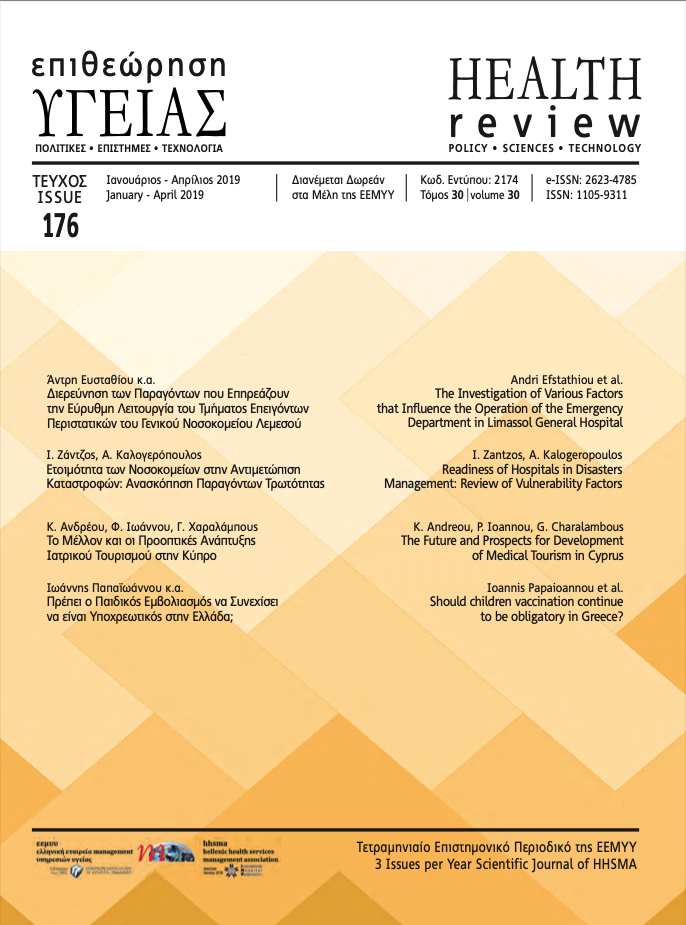Abstract
Hospitals suffer just the same by certain disasters, thus entering a “victim” state. The disruption of their smooth operation may be due to a serious event of either internal (e.g. fire) or external origin (e.g. earthquake). This paper aims to identify the vulnerability factors of hospitals in the event of disasters that could make the hospital a victim.
Following a bibliographic search (PubMed), 31 papers were used as study material. Findings show that electricity, water and communications are major vulnerabilities with significant secondary effects, while generators (more precisely their failure) are the Achilles heel of hospitals. Microbiology, radiology, pharmacy, dialysis, surgery, sterilization, feeding and nutrition departments along with centralized management are the most common departments that prove to be vulnerable. Observed malfunctions, especially in electricity, communications and water supply cause secondary “side effects” that eventually turn into care problems and in many cases may lead to evacuation. Taking into account the time needed to address these failures, it stands to reason that the impact on care is long-lasting. Constructing hospitals in accordance with strict building regulations, preventing problems in generators, water supply and communications, solving co-ordination and co-operation problems, improving disaster plans and offering practical training is effective fields of action. Further research is required both on the impact of disasters on hospitals and on solving the identified problems. Experiences from researchers can help minimize hospital failures and protect society.
